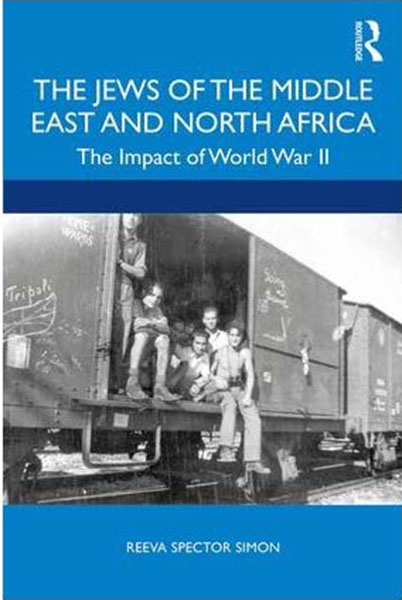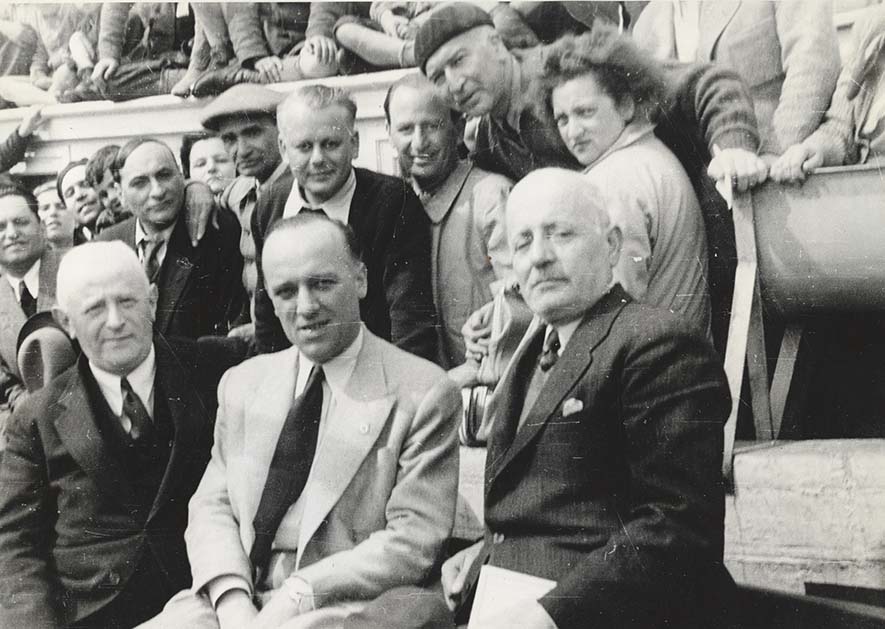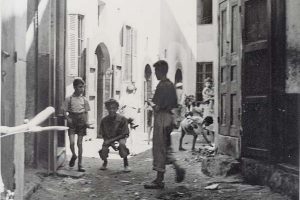
New Book—The Jews of the Middle East and North Africa: The Impact of World War II
How the war affected the Jews in the Middle East and North Africa, from Morocco to Turkey
Reeva Simon’s book The Jews of the Middle East and North Africa: The Impact of World War II, debunks the commonly held perception that Middle East and North African Jewry was not involved in World War II by providing a comprehensive survey of how the conflict affected the Jews who lived in the region.
Three prologue chapters focus on the 1930s. They detail the appeal of Fascism and Nazism to nationalist politicians in the region, the rise of European antisemitism—especially in Algeria—and the efforts of local Jewish leaders to restrain the antisemitic propaganda campaign and to launch a boycott of German products. Dr. Simon, a retired Professor of History at Yeshiva University, contrasts Mussolini’s attempts to garner Muslim support in North Africa and the Middle East during the interwar period to Hitler’s initial reluctance to become actively involved in the region as he hoped to maintain good relations with Britain.
The bulk of the book, devoted to the war years, demonstrates the “profound impact” that the conflict had on the Jews of the region. In Palestine, where there was economic distress and Axis bombing raids, the Jewish community—the Yishuv—worried continually about a renewed Arab rebellion led by the Mufti of Jerusalem and an invasion by Axis forces. At the same time, in adherence to the White Paper, the British prevented Jewish immigration from Nazi-occupied Europe to Palestine. In response, the Jewish Agency, which represented the Yishuv, decided “to fight the war against Hitler as if there was no White Paper and to fight the White Paper as if there was no war.” As a result, some 30,000 Jews volunteered in Palestine for service in the British Army while at the same time the Jewish Agency worked to smuggle in about 10,000 refugees illegally.
As Dr. Simon shows, the position of Jews also deteriorated in other areas of the Middle East due to economic deprivation, air raids and anti-Semitic propaganda. One of the most dramatic developments took place in Iraq, which declared war on Great Britain in May 1941 and was defeated. In the aftermath, mobs of youth gangs and retreating soldiers attacked Jews in Baghdad for two days during the holiday of Shavuot. The attack, known as the Farhud, affected about two thousand families. Property was looted, and it is estimated that somewhere between 135 and 190 Jews were killed and between 700 and 1,000 were wounded. The Yishuv leadership compared the Farhud to the attacks against Jews that took place half a century earlier in Russia, particularly the 1903 pogrom in Kishinev.
The situation of Jews was not brighter in North Africa. The armistice agreement that the French signed with Germany in May 1940 placed their North African territories—Algeria, Tunisia and French Morocco—under Vichy control. Jews in these countries were subject to the antisemitic statutes that affected Jews in Vichy France. In Algeria, the government revoked the Cremieux Decree that had given Algerian Jews full French citizenship. Jews in French North Africa were subjects to the same restrictions as all Jews on French soil. They were purged from the liberal professions, commerce, crafts and industry and virtually eliminated from medicine, law and pharmacy. In Morocco, the Jews were forced to move into the overcrowded Jewish quarter (mellah). In addition, there were about 60 labor camps in Morocco and Algeria where about 15,000 Jewish men, women and children were interned, including demobilized soldiers and Jewish refugees from Europe.
The volume shows that throughout the war, the Middle East and North Africa regions served as escape routes for Jews fleeing the Nazis. In the West, refugees fled to Casablanca and Tangier looking to emigrate to the Americas. In the East, refugees took small unseaworthy boats that sailed down the Danube river to the Black Sea and Turkey with the objective of reaching Palestine.
Despite their own dire circumstances, the Jews of the region assisted the refugees. In Casablanca, Hélène Cazès-Bénatar, an attorney, established The Committee for Assistance of Foreign Refugees (Comité d’Assistance aux Réfugiés étrangers) to provide relief to the refugees and have them released from internment camps that were set up throughout French Morocco. Bénatar received funds from the Joint to to help her sustain her operations.
In the same vein, in Turkey, a local businessman, Simon Brod, coordinated with the JDC and the Jewish Agency to feed, lodge and provide medical care for the refugees.
In Iran, too, European refugees fleeing the Nazis were assisted by members of the Persian Jewish community who made them feel welcome by providing housing and organizing meals, even though they themselves were in need of assistance.
Dr. Simon points out even at the end of the hostilities, life in the region did not return to normal. The Jewish communities were financially decimated, and the JDC became more actively involved in the region assisting not only the refugees but also the local poor.
Grand in scope, The Jews of the Middle East and North Africa: The Impact of World War II is an important resource for scholars and general readers interested in the Holocaust and the history of the Middle East and North Africa.




